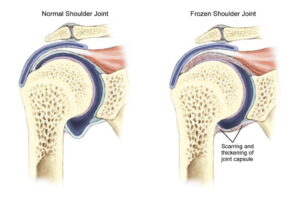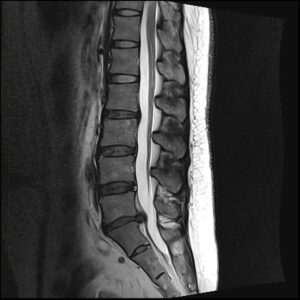If you have knots or trigger points in your neck or back, your physical therapist may use a variety of treatments to help get rid of them. One such treatment is called dry needling. Dry needling is a newer treatment offered by physical therapists, and it is often confused with acupuncture. But there are specific differences between dry needling and acupuncture.
How is dry needling used in Physical Therapy?
It’s called needling because thin monofilament needles are placed in pathologic, soft tissues such as muscles, tendons, and scar tissue. Since there’s no liquid being injected from the needle, it is called “dry.” The primary aim of dry needling is to relieve muscle pain and spasm within those muscles. Dry needling is more targeted and can treat deeper tissues than superficial techniques such as soft tissue massage or superficial heat.
How is Dry Needling different from Acupuncture?
The most common question we hear about dry needling is, “How is this different from acupuncture?”. Although both treatments use the same instruments and share some similarities, the treatment philosophy of dry needling is completely different from acupuncture and should not be confused. Acupuncture is a traditional Chinese medicine treatment with the goal of rebalancing a person’s flow of energy. Conversely, dry needling treatment addresses pathology in musculoskeletal tissues, namely muscle knots and trigger points..
How does it work?
Feel those knots in your back? We call them trigger points. Trigger points are typically taut bands in the muscles that lack oxygen due to reduced blood flow. They cause pain, reduce range of motion, and limit physical function. We use dry needling to relax muscle knots and promote improved blood circulation. This brings necessary oxygen and nutrients to the muscle. The insertion of the needle induces a local twitch response, which is a palpation of the muscle as the fibers contract.
Why use Dry Needling?
How’s your posture? Many people sit a good part of the day typing on a computer–like I am right now– or perform a lot of repeated motions. Work is often stressful which directly affects our bodies. This causes tight muscular bands to form which can be painful and limit our motion. Dry needling treatments can create substantial change in disability and pain and are highly effective as part of a comprehensive physical therapy treatment plan to restore your prior level of function as rapidly as possible.
How does a patient qualify?
If a patient isn’t afraid of needles, needs a lot of myofascial work, has good tissue health, and has no contraindications, then dry needling may be considered as a treatment for muscle knots.. We use dry needling to target specific stress areas for patients that may be too deep to hit with massage. Be sure to discuss with your therapist if dry needling is a treatment that may be of benefit for your condition.
How long does it last?
The duration of pain relief and muscle tissue healing that occurs with dry needling depends on the patient and his or her individual needs and health status. Dry needling takes approximately 5 minutes to place the needles and another 5-15 minutes to achieve the maximum benefit. Studies have shown that there’s a potential treatment benefit of up to 20 minutes. So your PT often leave them in for 5-20 minutes depending on the patient and their needs.
What types of conditions does Dry Needling treat?
There are several conditions and diagnoses that typically respond well to dry needling. These conditions are:
- Neck and Back Pain
- Shoulder Pain
- TennisElbow
- Headaches
- Hip and Gluteal Pain
- Knee Pain
- Achilles Tendonitis
- Plantar Fasciitis
- Sciatica
- Muscular Strains
- Chronic Pain
The strongest literature supports dry needling for neck pain, but we have seen benefits in everything from low back pain to temporomandibular joint dysfunction/ jaw disorders.
Does it Hurt?
The pain response from dry needling depends on the person and the sensitivity of the tissue being treated. There can be some radiating sensation in the surrounding area of where the needle is placedthat lasts about 30-60 seconds. The needles are smaller since they don’t need space to inject anything. The needles used for dry needling are about 10 times smaller than a typical syringe.
What can I expect after?
Often times there’s soreness for a few hours after the treatment but you can expect symptom relief later that day or the next day. Typically one out of six needles may cause a small drop of bleeding when the needle is removed. . If you experience any lasting negative effects from your dry needling session, be sure to contact your physical therapist to discuss your specific reaction.
Conclusion
There’s so much to do in Asheville, and we’ll help you enjoy all of it. Physical therapists like us use dry needling as part of an overall strategy to reduce your pain and restore confidence in your physical abilities. It’s performed by specially certified physical therapists. Give Compass Physical Therapy a call at (828) 490-4499 and we’ll be happy to answer any questions you have about dry needling.







